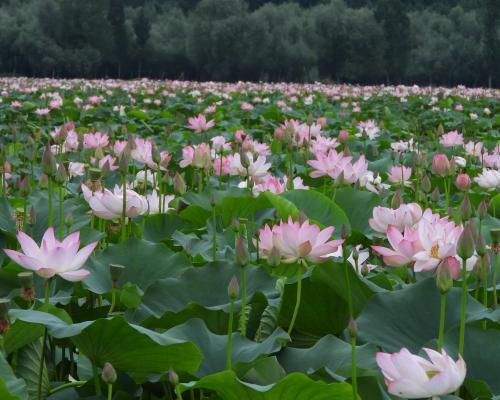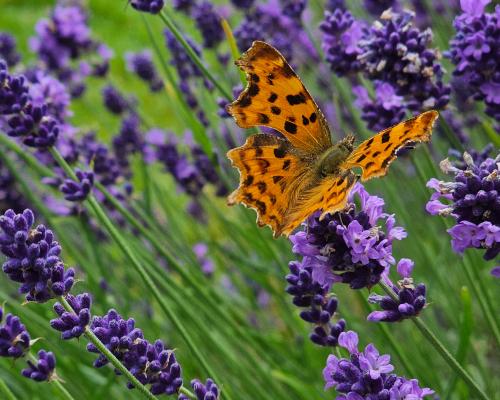
“We threw seeds into the lake hundreds of times, but nothing grew. It’s only now, after the silt was cleared, that we see the flowers again after nearly 33 years,” says Bashir Ahmad, a 65-year-old who fishes in Kashmir’s Wular Lake for his livelihood.
Wular was once among Asia’s largest freshwater lakes. It lies in the Kashmir valley, about 18 miles (30km) north-west of Srinagar, at the foot of the Pir Panjal and Himalayan mountain ranges. It was renowned for its high-quality lotus plants, and sustained the livelihoods of more than 5,000 people who harvested and sold nadru – the edible lotus stem cherished as a delicacy in Kashmiri households and which features in wazwan, the region’s traditional multi-course celebratory meals.
Then, in 1992, devastating floods hit the region. They choked the lake bed with silt, wiping out the lotus plants and plunging families into poverty. The prized stems gradually disappeared as an ingredient used in local kitchens.
Over the next three decades, the condition of the lake – designated as a Ramsar wetland of international importance since 1990 – worsened, Bashir says. Parts were turned into dumping grounds and its area was drastically reduced.
While in 1911 it spanned 217 sq km (84 sq miles), with 58 sq km of marshes, by 2007 the lake had shrunk by nearly two-thirds to cover just 86 sq km, according to the Jammu and Kashmir regional government. An official survey blames the shrinkage largely on land being converted for farming, which also led to a 17% decline in the lake’s fauna. Expanding willow plantations around the lake increased the buildup of silt. The trees acted as barriers, disrupting the flow of the river and causing sediment to accumulate.
In 2020, the Wular Conservation and Management Authority (Wucma) began a de-silting programme to restore the lake’s depth and remove waste carried down by the Jhelum River and its tributaries. Officials say more than 7.9m cubic metres of silt have been removed from the lake so far. More than 2 million willows have been uprooted. Five years on, the lotus flowers are blooming again.
Ahmad, whose four brothers also depend on the lake for their livelihood, says that seeing the lotus bloom again feels like a dream come true. “We had lost all hope that it would ever return. Some in our community even took up other work, like labouring, to survive. But we waited,” he says.
“Our elders used to collect lotus stems from the lake and sell them in various markets across the valley, especially during special occasions,” he says.
“After the lotus disappeared, they turned to fishing, but that didn’t prove as sustainable. The return of the lotus has brought back hope.”
Ahmad’s brother, Mohammad Fayaz Dar, says that after the lotus stems disappeared, nadru also gradually vanished from local diets. “But now, we believe it will be revived completely,” he says.
The dishes made with it, Dar adds, hold deep cultural significance for Kashmiri families: “Lotus stem connects our food to the land. Its absence changed menus.
“Now that it’s back, we’re preparing dishes the way our grandmothers did – slow, simple, and full of memory,” said Tavir Ahmad, a chef in a Kashmir market.
Wucma officials said the revival of the lotus would help boost the local economy, which was otherwise on the verge of collapse.
“It’s public property, but people need to take care of it,” said Showket Ahmad, a Wucma employee.
He says that although lotus stems had not been visible in the lake for years, the roots had probably remained dormant – buried under layers of silt.
“After we cleared silt from specific areas, lotus plants started re-emerging,” he says. Historically, the lake has sustained fishing communities and harvesters of water chestnuts. It remains a critical habitat for migratory birds, including the Siberian crane.
“This is not just the revival of a plant, it’s the resurrection of a cultural ecosystem,” said Meera Sharma, a Delhi-based environmentalist. “When nature heals, it revives everything it once nurtured – livelihoods, traditions, biodiversity.
“The return of the lotus in Wular is a profound reminder that environmental restoration isn’t just about aesthetics or data points; it’s about restoring human connection with the land,” she says.
“Seeing these flowers bloom again after decades is like watching history breathe.”
Find more age of extinction coverage here, and follow the biodiversity reporters Phoebe Weston and Patrick Greenfield in the Guardian app for more nature coverage





